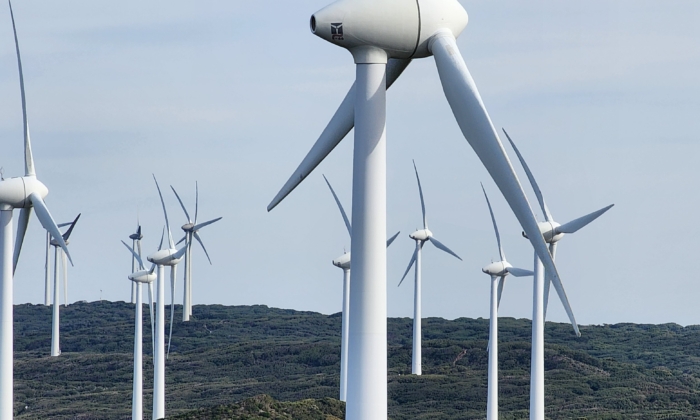Australia’s Transition to Net Zero Energy Estimated to Cost $5 Trillion by Experts
Michael Brear stated, “The additional cost for the domestic decarbonisation task is between $500 and $800 billion, going from no abatement target to net zero.”
New modeling has revealed that Australia will need to allocate around $5 trillion (US$3.32 trillion) for a net zero energy transition in the domestic market alone.
University of Melbourne Professor Michael Brear, director of the Melbourne Energy Institute, detailed the total costs of the renewable energy transition for different scenarios in his submission (pdf) to the Select Committee on Energy Planning and Regulation in Australia.
He estimated that transitioning the domestic market without emission reduction efforts, a “no abatement target,” would cost $4.3 trillion in 2020 dollars and could exceed $5 trillion with net-zero targets included.
Brear informed the Committee during a recent inquiry hearing, “The additional cost for the domestic decarbonisation task is between $500 and $800 billion, going from no abatement target to net zero.”
According to the submission, these extra costs stem from investments in capital-intensive assets across all sectors, including renewables, transmission and distribution networks, energy storage, natural gas-fired generation, as well as various end-use appliances and electric vehicles.
Furthermore, the professor highlighted that the additional cost would be more significant for decarbonizing the export market.
It is estimated to cost about $2.6 trillion to transition the export energy market without an abatement target, with the total investment rising to between $4.1 and $6.1 trillion for net zero scenarios.
Brear admitted to limitations in his modeling, stating, “The most significant caveat is that the export NPV [net present value] assumes we maintain current energy exports levels and replace them with clean alternatives. That’s a substantial assumption.”
Nationals Senator Questions the Massive Cost of the Energy Transition
Following Brear’s analysis, Nationals Senator Matt Canavan expressed concerns about the significant cost associated with the energy transition.
Canavan highlighted that the additional $500-$800 billion required for decarbonizing the domestic market would translate to an extra expense of $20,000-$30,000 per Australian.
He remarked, “Your evidence and your modeling suggest that there is a cost to the Australian public to achieve a net zero target.”
“We’ve been informed by supposed experts that reaching net zero would be costless,” he added. “We weren’t told it could cost $20,000-$30,000 per Australian.”
Additionally, the senator voiced concerns that transitioning the export energy market would leave Australia economically disadvantaged.
“The capital costs of these programs amount to $2.1-$4 trillion, equating to $80,000-$150,000 per Australian,” Canavan stated. “Considering there are over 26 million people, that’s a significant amount.”
Export Partners Would Foot the Bill: Energy Expert
In response, Brear clarified that he had not calculated the cost per capita, emphasizing that the cost of transitioning the export market should be covered by long-term contracts with export partners, not by Australians.
Canavan then queried Brear about whether other countries would need to pay more to purchase Australian energy.
He referred to an analysis by Brear in 2023, which suggested that decarbonizing the export system would be five times more costly than the reference case.
“Does this mean that energy customers would have to pay five times more for Australian energy to achieve net zero?” Canavan inquired.
Brear acknowledged that the cost might exceed that figure, indicating a need for further analysis to validate the numbers.
The Nationals Senator expressed skepticism about whether other nations would agree to pay higher prices for Australian energy.
“Based on my experience, particularly in North Asia, I have doubts about their willingness to pay potentially over five times the cost of energy,” Canavan remarked.
Brear concluded that Australia’s export energy system’s magnitude would ultimately depend on which entities were willing to cover the country’s energy expenses.





